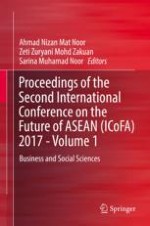2019 | OriginalPaper | Buchkapitel
The Economic Model for Flood Damage Cost in Retailing Business in Malaysia
verfasst von : Fader Abdullah, Syaidatul Nadwa Mohammad, Ja’affar Mohamad, Mahyudin Ahmad
Erschienen in: Proceedings of the Second International Conference on the Future of ASEAN (ICoFA) 2017 - Volume 1
Verlag: Springer Singapore
Aktivieren Sie unsere intelligente Suche, um passende Fachinhalte oder Patente zu finden.
Wählen Sie Textabschnitte aus um mit Künstlicher Intelligenz passenden Patente zu finden. powered by
Markieren Sie Textabschnitte, um KI-gestützt weitere passende Inhalte zu finden. powered by
